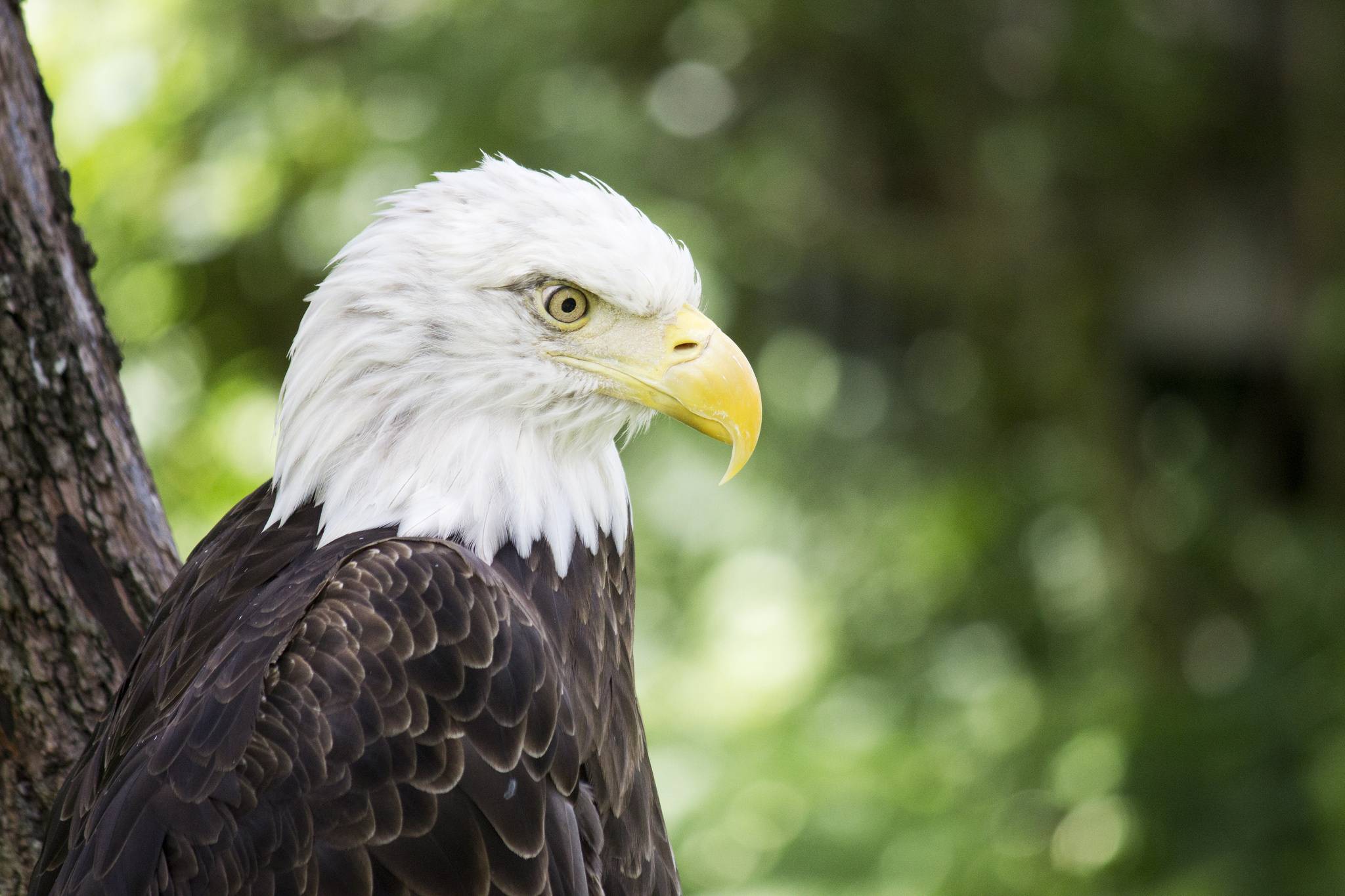

Bald eagles look awesome. Heck, all eagles look awesome. It’s why they’re a good national symbol—they seem so fearsome and regal.
But despite their image being absolutely freakin’ everywhere, the average American probably doesn’t know a whole lot about them. And as today is National American Eagle Day, we thought we’d bring you up to speed with some cool bald eagle facts.
Bald eagles actually sound pitiful
You know the sound you hear every time there’s a bald eagle in a movie or TV show? Yeah, that’s not a bald eagle. This bald eagle fact became more widespread knowledge in 2012, when NPR published a story about how widespread this Hollywood mixup is.
See, bald eagles don’t sound impressive. They sound like a small bird you’d find in your yard or perhaps like a small turkey. The Cornell Lab of Ornithology calls it “a high, weak-sounding whinny”—you can listen here.
Know what does sound impressive? A red-tailed hawk. Their cries are piercing—and so that’s almost always what movies use in place of a real bald eagle call.

You mostly see pictures of the females
Female bald eagles are about 25 to 33 percent bigger than the males, sitting about three inches taller and having a five-inch-broader wingspan—that puts the average female at about three feet tall with a 7.5-foot wingspan. For this reason, eagle expert Connie Stanger told NPR that most of the images you see of bald eagles are of females. This is true of most birds of prey, though ornithologists aren’t quite sure why. The females tend to protect the nest and are often the more dominant of the mating pair, so it may be that larger mothers are more beneficial. Some ornithologists have also theorized that having a size difference allows each bird in the pair to hunt slightly different animals—the males can get smaller, more agile prey while the females snatch up larger animals—expanding their available food sources.
There are other possible reasons for the size difference too. Maybe the female needs more nutritional reserves to produce her eggs. Maybe lighter males who can hunt smaller prey are, in the end, better providers. Whatever the reason, know that the scariest bald eagle is pretty much always the lady.

They often mooch off other birds and eat trash
Sure, they look like terrifying birds of prey, but bald eagles tend to skip the actual work of hunting and instead steal from other animals. The Cornell Lab of Ornithology notes that bald eagles will harass an osprey with prey in its talons until it drops the food, allowing the eagle to literally swoop in and snatch the fish. They’ll even try to rip the prey straight out of the osprey’s claws, relying on their much larger body size to intimidate and overpower the smaller osprey. Sometimes they’ll nab prey from mammals, too, as you can see in this alarming video (don’t worry—the fox is okay!):

This is, incidentally, why Benjamin Franklin didn’t think America’s symbol should be an eagle. It’s a popular myth that he wanted the turkey instead (the Smithsonian says he just suggested that the bird on the proposed American seal looked like it was a turkey and that turkeys were more respectable bird), but he did write that the bald eagle “is a Bird of bad moral Character.” Furthermore, he wrote, “He does not get his Living honestly. You may have seen him perched on some dead Tree near the River, where, too lazy to fish for himself, he watches the Labour of the Fishing Hawk; and when that diligent Bird has at length taken a Fish, and is bearing it to his Nest for the Support of his Mate and young Ones, the Bald Eagle pursues him and takes it from him.”
That being said, bald eagles have been known to take down deer fawns, seal pups, and full-grown beavers. Sometimes they’ll even go after turtles. Most of these, you’ll notice, are not particularly dangerous creatures—overall, bald eagles prefer the lazy route. Lots of times, that means eating already-dead fish or mammals, or even scavenging whale carcasses.
It’s hard to blame them, though—you’d go for the dead salmon lying conveniently on the banks of a river too if you had to track down every calorie you ingested.
